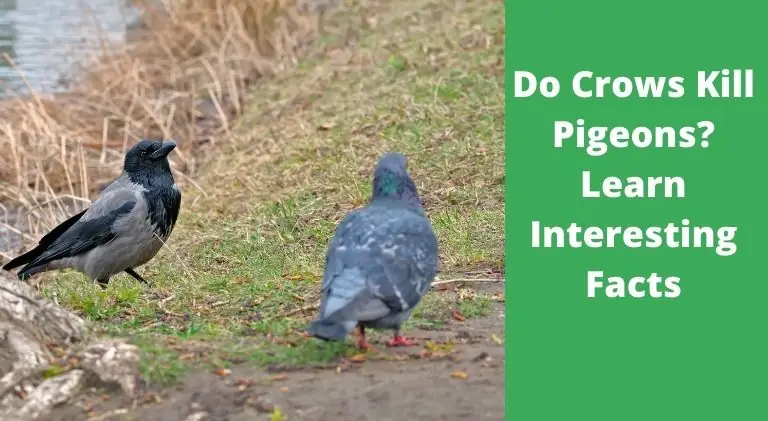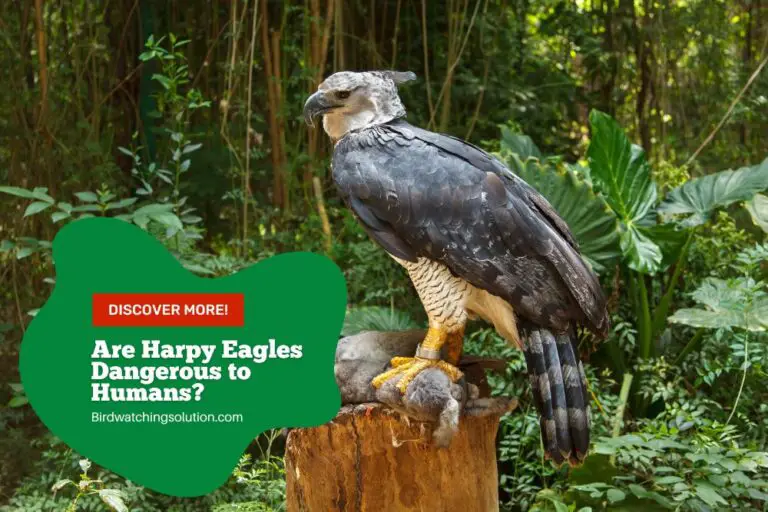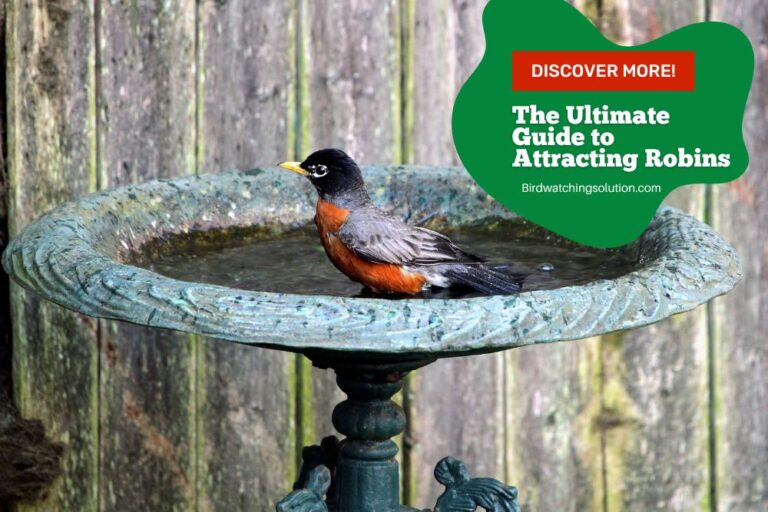Why Do Birds Fly in Front Of Cars: Exploring the Reasons!
Birds flying in front of cars is a fascinating and somewhat perplexing phenomenon that has puzzled drivers and bird enthusiasts alike.
It is common to see birds darting across roads and seemingly putting themselves in harm’s way.
But why do they do it?
What drives these feathered creatures to take such risky behavior? In this comprehensive article, we will delve into the intriguing world of birds and explore the reasons behind their tendency to fly in front of cars.
We can gain valuable insights into this fascinating occurrence by understanding their behavior, instincts, and environmental factors.
So Why do birds fly in front of cars?
Birds fly in front of cars due to a combination of factors: chase instinct triggered by high-speed movements, nest protection response, visual illusions, and habituation to vehicles.
Get ready to discover the secrets behind these airborne daredevils and gain a deeper appreciation for the complex relationship between birds and the vehicles that traverse their territories.
Keep reading to unlock the mysteries and uncover the hidden wonders of why birds take flight in front of cars.
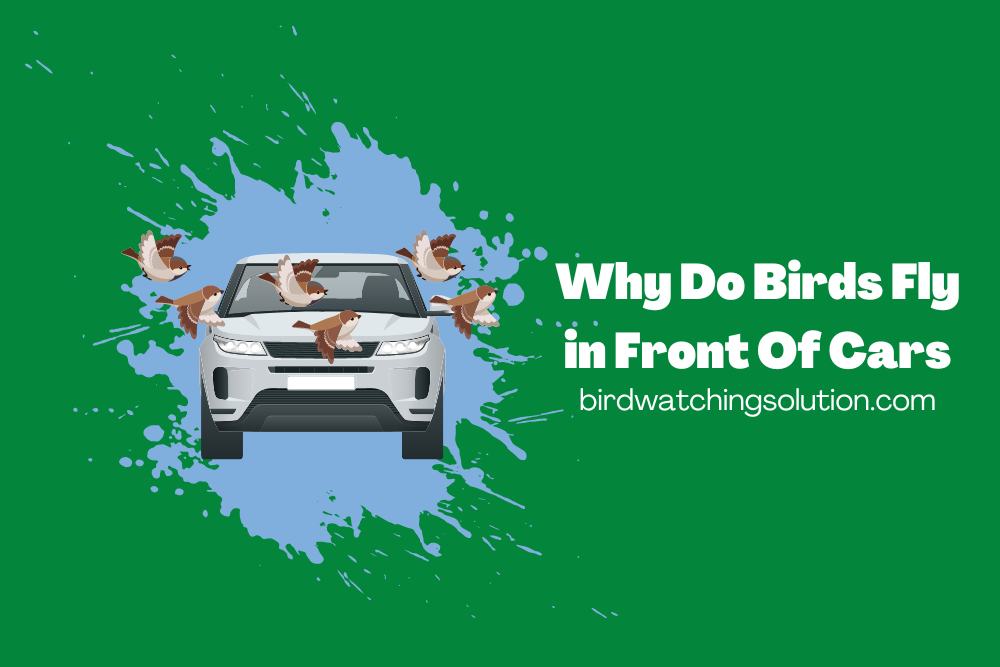
Understanding Bird Behavior and Flight Patterns
Birds possess instinctual behaviors and remarkable flight abilities that enable them to navigate their surroundings and find food, mates, and shelter.
By understanding their behavior and flight patterns, we can gain insights into why they fly in front of cars and the factors influencing their flight choices.
The Instinctual Nature of Birds and Their Flight Abilities
Birds have evolved over millions of years with innate instincts that govern their behavior, including flight.
Flight is a fundamental aspect of avian existence, providing them mobility and survival advantages.
They possess specialized anatomical features, such as lightweight bodies, strong wings, and efficient respiratory systems, allowing them to take to the skies gracefully and with agility.
Environmental Conditions
Environmental conditions play a significant role in shaping bird flight patterns. Birds are susceptible to weather conditions, including wind speed, direction, and air temperature.
They often adjust their flight routes and behaviors in response to these factors. For example, strong headwinds may discourage birds from flying, while tailwinds can facilitate their migration or foraging activities.
Seasonal Migrations
Many bird species undergo seasonal migrations, covering vast distances to reach breeding or wintering grounds.
Environmental cues, such as the availability of food, changes in daylight hours, and temperature variations, influence these long-distance journeys.
Bird flight patterns can significantly affect migration as they navigate unfamiliar territories and encounter different ecological challenges along their routes.
Natural Habitats and Nests
Bird flight patterns are closely linked to their natural habitats and nest locations.
Birds have specific preferences for particular habitats, such as forests, wetlands, or grasslands, based on their dietary needs, nesting requirements, and predator avoidance strategies.
Flight patterns are shaped by the need to locate suitable feeding areas, water sources, and secure nesting sites.
Bird Vision and Perception: How They Detect Vehicles
Birds have remarkable visual capabilities that allow them to detect and navigate through their environment, including perceiving vehicles on roads.
Their eyesight is adapted to detect movement, recognize shapes, and discern colors.
Birds use their keen vision to spot potential threats or opportunities for food.
However, they may misinterpret moving vehicles as prey or fail to accurately judge the distance and speed, leading them to unintentionally fly in front of cars.
Exploring the Reasons Birds Fly in Front of Cars
Birds flying in front of cars can be attributed to various reasons, from their instincts, territorial behavior, visual perceptions, and interaction with vehicles.
By examining these factors, we can better understand why birds engage in this behavior and shed light on their motivations.
The “Chase Instinct”: Birds Mistaking Cars for Prey
Birds possess an innate “chase instinct” that drives them to pursue moving objects, often mistaking them for potential prey.
This instinct is mainly triggered when birds encounter vehicles on the road.
The high-speed movements of cars can resemble the swift motion of prey, activating their hunting response.
High-Speed Movements and the Prey Response
Birds are evolutionarily wired to respond to the quick movements of their prey.
When they see cars rushing, they instinctively respond to engage in pursuit.
However, due to their limited understanding of vehicular dynamics, this chasing behavior puts them at risk of collisions.
Predatory Birds and the Hunting Instinct
Certain bird species, like raptors and falcons, have well-developed hunting instincts.
These predatory birds are naturally inclined to pursue and capture moving objects.
As a result, they may be more prone to flying in front of cars due to their inherent hunting behavior.
Territory Defense: Birds Protecting Their Nests or Flocks
Birds are fiercely protective of their territories, nests, and flocks.
When they perceive cars as threats encroaching upon their nesting or feeding areas, they exhibit defensive behavior, including flying in front of vehicles.
Perceiving Cars as Threats to Their Young or Group
Birds interpret vehicles as potential dangers to their offspring or group members.
This perception triggers their protective instincts, prompting them to confront and deter what they perceive as threats.
They may engage in aerial displays, vocalizations, or physical contact with the vehicle to defend their territory or nest.
Aggressive Behavior and Nest Defense Mechanisms
To safeguard their nests, birds display aggressive behaviors when faced with vehicles.
They may dive-bomb, peck, or swoop in front of cars to deter what they perceive as intruders.
These nest defense mechanisms directly respond to the perceived threat posed by vehicles.
Visual Illusions and Misinterpretations
Birds’ visual perception can sometimes lead to misinterpretations, contributing to their tendency to fly in front of cars.
Optical Reflections and Distorted Visual Cues
Optical reflections on car surfaces, such as shiny windows or mirrors, can create visual illusions for birds.
They may mistake these reflections for other birds or potential food sources, leading to confusion and erratic flight patterns.
Effects of Light and Shadow on Bird Perception
Birds’ perception of depth, speed, and distance can be influenced by lighting conditions and shadows cast by vehicles.
Changes in lighting angles and shadows can alter their judgment and contribute to misjudging the position or speed of approaching cars.
The Role of Habituation: Birds Getting Accustomed to Vehicles
With regular exposure to vehicles, birds can become habituated to their presence.
Habituation occurs when birds gradually become desensitized to the potential dangers of cars, leading to a reduced fear response.
Habituated birds may exhibit bolder behavior, including flying in front of vehicles, as they perceive them as less threatening.

Potential Consequences and Dangers
When birds fly in front of cars, various consequences and dangers arise.
These include the risks posed to both the birds and the drivers and the broader environmental impact.
Additionally, legal and ethical considerations come into play when addressing the need to protect birds.
Bird-Car Collisions: Risks to Birds and Drivers
Bird-car collisions pose risks to both birds and drivers. When birds fly in front of cars, they may collide with the vehicle, leading to injuries or fatalities.
The impact can cause severe harm to the birds, including broken wings, internal injuries, or death.
For drivers, collisions with birds can result in distractions, loss of control, or damage to the vehicle.
In some cases, bird strikes may even lead to accidents involving multiple vehicles.
Environmental Impact: Disruption of Ecosystems
Birds flying in front of cars can have significant environmental implications.
Birds play crucial roles in ecosystems as pollinators, seed dispersers, and regulators of insect populations.
When birds are injured or killed due to collisions with cars, these ecological functions disrupt.
Furthermore, the loss of specific bird species or a decline in their populations can have cascading effects on the balance and biodiversity of ecosystems.
Legal and Ethical Considerations: Protecting Birds
Legal and ethical considerations surround the protection of birds and their habitats.
Many countries have legislation in place to safeguard birds, particularly those that are endangered or migratory.
Laws and regulations may impose penalties for harming or killing protected bird species.
Additionally, there is an ethical responsibility to minimize harm to wildlife and ensure their conservation.
This includes taking measures to reduce bird-vehicle collisions through awareness campaigns, road design modifications, and implementing bird deterrent measures.
Bird-Friendly Solutions and Mitigation Strategies
Various bird-friendly solutions and mitigation strategies can be implemented to address the issue of birds flying in front of cars and reduce the associated risks.
These measures focus on raising awareness, modifying road designs, implementing bird deterrent measures, and fostering collaboration and research for bird conservation.
Raising Awareness: Educating Drivers and the Public
Raising awareness is crucial in minimizing bird-car collisions.
Educational campaigns can be conducted to inform drivers and the public about the phenomenon of birds flying in front of cars, its potential dangers, and the importance of bird conservation.
By promoting responsible driving behaviors, such as reduced speed in areas known for bird activity, drivers can be encouraged to be more vigilant and take precautions to avoid collisions.
Road Design Modifications: Creating Bird-Safe Environments
Road design modifications can contribute to creating bird-safe environments. Incorporating bird-friendly features into infrastructure planning and design helps mitigate bird risks.
This includes measures such as creating wildlife crossings, installing bird-friendly signage to alert drivers of bird habitats, and implementing vegetation buffers to provide shelter and reduce the likelihood of birds flying into traffic.
Implementing Bird Deterrent Measures: Innovations and Approaches
Various bird deterrent measures can be employed to discourage birds from flying in front of cars.
These measures aim to modify bird behavior and reduce their attraction to roads and vehicles.
Innovations such as ultraviolet reflective coatings on car surfaces, motion-activated sound devices, or visual deterrents like bird-shaped decals can help create visual cues that birds interpret as potential threats, deterring them from approaching vehicles.
Collaboration and Research: Partnerships for Bird Conservation
Collaboration and research efforts are essential for effective bird conservation and the development of long-term solutions.
Partnerships between government agencies, conservation organizations, researchers, and road authorities can facilitate the exchange of knowledge and resources.
Research initiatives can focus on studying bird behavior, migration patterns, and the effectiveness of mitigation strategies, leading to evidence-based approaches for minimizing bird-car collisions.
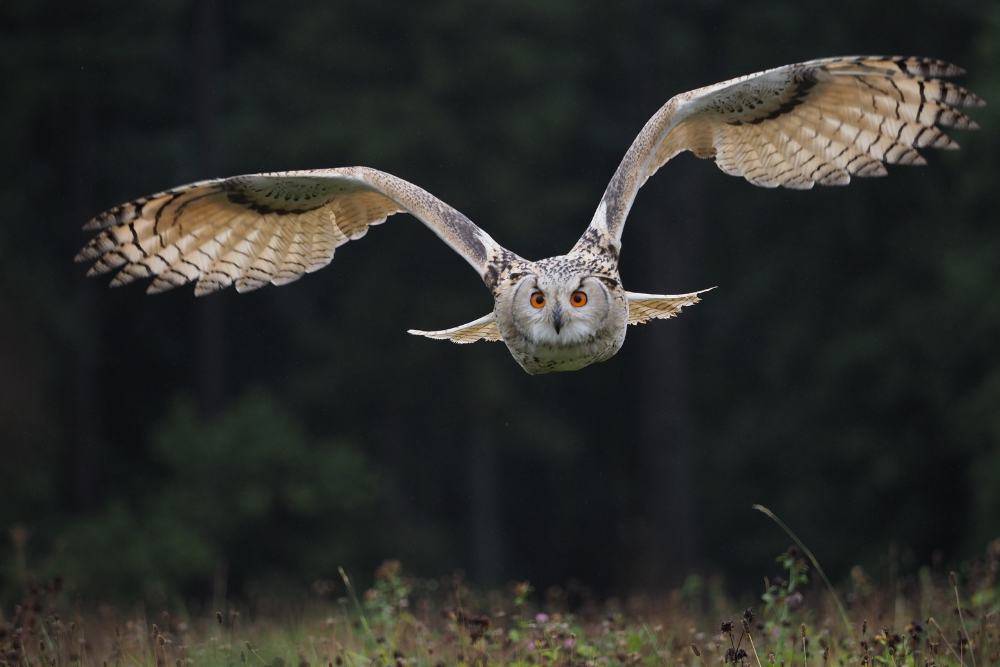
How Many Birds Are Killed by Cars in the World?
According to available data, quantifying the exact number of birds killed by cars worldwide is arduous.
Nevertheless, it is estimated that the annual toll reaches the hundreds of millions, emphasizing the significant impact of vehicular collisions on avian populations.
Recent estimates in the United States suggest that between 49 million and 340 million birds fall victim to car collisions each year.
This staggering range underscores the issue’s magnitude and highlights the urgent need for measures to mitigate bird-vehicle incidents.
Across the pond in the United Kingdom, a 1994 report shed light on the number of birds involved in car collisions.
It revealed that at least 30 million individual birds perished in such incidents that year.
Moreover, the report discussed more generous estimates, reaching up to 80 million birds annually, further emphasizing the severity of the problem.
In Australia, specific figures for bird fatalities caused by cars remain unconfirmed.
However, it is essential to note that road accidents in the country claim the lives of around 10 million animals each year, encompassing birds, mammals, and reptiles.
Here’s a summarized table of the estimated bird fatalities caused by car collisions in the mentioned countries:
| Country | Estimated Annual Bird Fatalities (Range) |
|---|---|
| United States | 49 million – 340 million |
| United Kingdom | 30 million (minimum) – 80 million (maximum) |
| Australia | Unconfirmed |
What To Do if You Strike a Bird Accidentally?
If you accidentally strike a bird with your vehicle, it’s essential to take prompt action to assist the injured bird.
If the bird is visibly injured or stunned and on the ground, and it is safe to do so, find a suitable place to park your vehicle.
Next, carefully move the injured bird from the middle of the road and place it in a cardboard box while you seek assistance.
You can cover the box with a tea towel or similar material to keep the bird calm.
It’s worth noting that some birds may only be stunned and could potentially recover and fly away once they’ve had time to recover.

However, for birds with more severe injuries, contacting a wildlife rehabilitation center for expert support and guidance is recommended.
While attending to the injured bird, it’s crucial to prioritize your safety and the safety of other drivers.
Pull over to a safe location before cleaning your windshield or attending to any damage caused by the collision.
Remember, acting with care and seeking professional help can significantly increase the chances of the injured bird receiving the necessary care and treatment to recover.
Last Minute Thoughts!
Birds flying in front of cars highlights the delicate balance between human activities and the natural world.
While the exact number of birds killed by car collisions worldwide remains challenging, the estimates are staggering, emphasizing the need for awareness and proactive measures.
As drivers, we can play a crucial role in minimizing bird-vehicle incidents.
By staying vigilant, reducing speed in areas known for bird activity, and promoting responsible driving behaviors, we can mitigate the risks and protect birds and ourselves.
Furthermore, collaboration among government agencies, conservation organizations, researchers, and road authorities is vital.
By joining forces, sharing knowledge, and researching, we can develop effective strategies and implement bird-friendly solutions.
I hope after reading this article, you should have learned why birds fly in front of cars!


